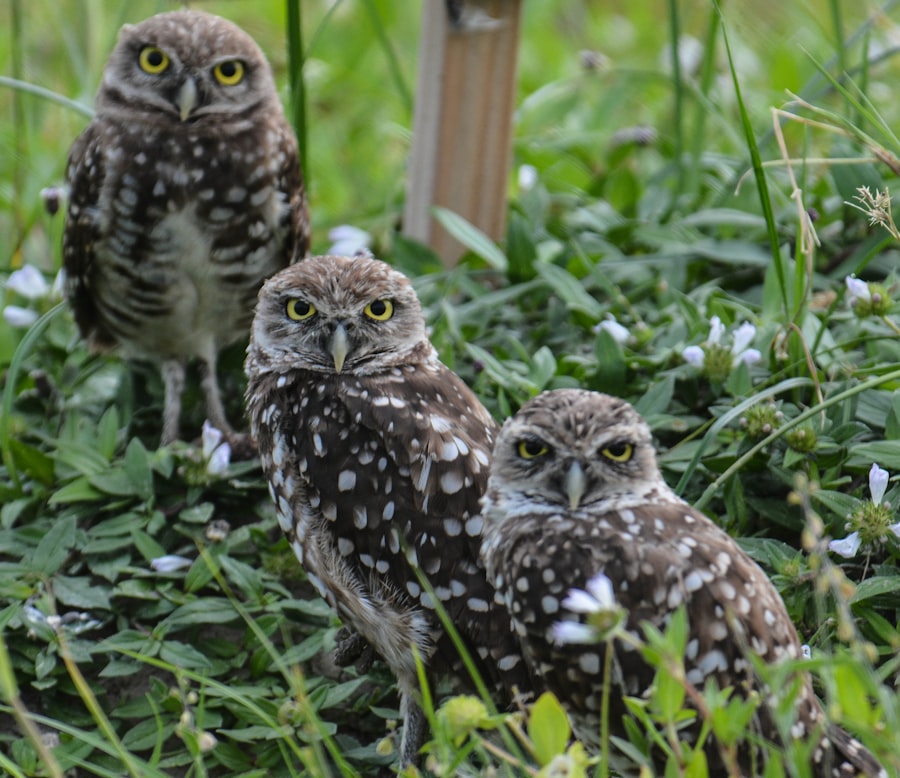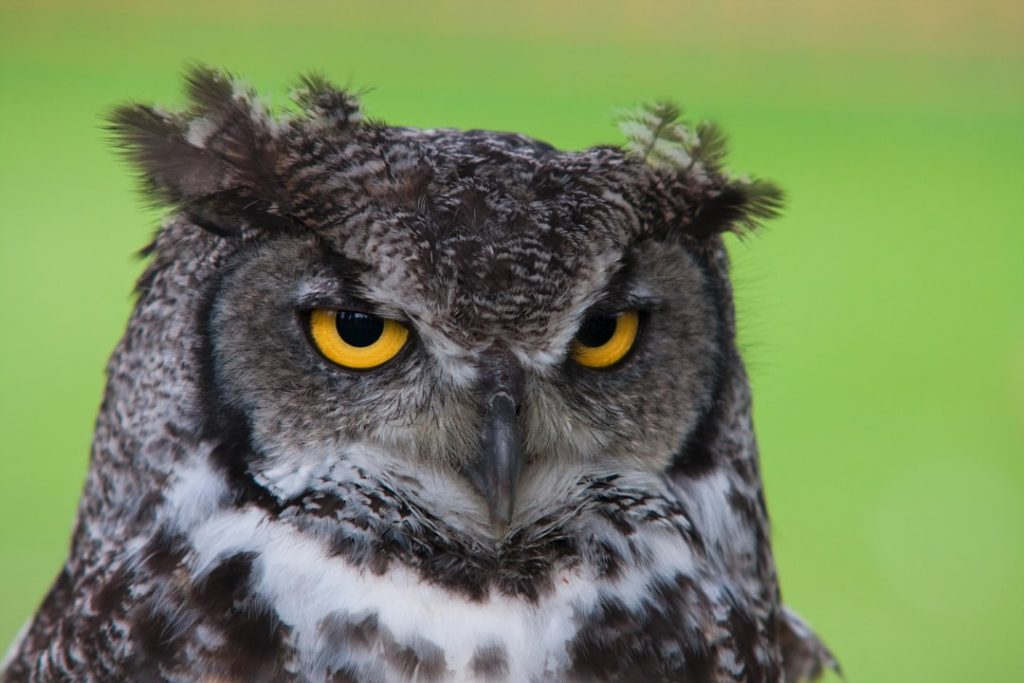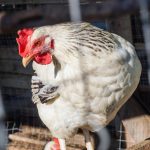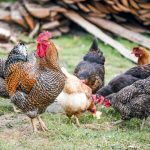Owls are natural predators that pose a significant threat to chickens. These nocturnal birds of prey have keen eyesight and sharp talons, making them efficient hunters. They are known to target small animals, including chickens, as part of their diet.
Owls are silent flyers, allowing them to swoop down on unsuspecting prey without warning. This makes them particularly dangerous to free-ranging chickens, as they can easily become targets while foraging or roosting outside. Additionally, owls are known for their ability to carry off prey that is much larger and heavier than themselves, making them a formidable threat to chickens of all sizes.
Furthermore, owls are skilled hunters that can easily bypass traditional chicken coop defenses. They can spot weaknesses in coop structures and exploit them to gain access to the chickens inside. Even secure coops with wire mesh can be vulnerable if not properly reinforced, as owls can use their sharp beaks and talons to break through or pry open weak spots.
It is important for chicken owners to recognize the danger that owls pose and take proactive measures to protect their flock from these formidable predators.
Table of Contents
- 1 Implementing Physical Barriers: Building a Secure Chicken Coop
- 2 Utilizing Predator Deterrents: Installing Owl Decoys and Scare Devices
- 3 Creating a Safe Environment: Clearing Vegetation and Securing Perimeters
- 4 Implementing Nighttime Measures: Using Motion-Activated Lights and Sound Devices
- 5 Establishing a Routine: Consistent Monitoring and Maintenance
- 6 Seeking Professional Help: Consulting with Wildlife Experts and Veterinarians
- 7 FAQs
- 7.1 What are some natural ways to keep owls away from my chickens?
- 7.2 Are there any commercial products available to keep owls away from my chickens?
- 7.3 What are some measures I can take to secure my chicken coop from owl attacks?
- 7.4 Are there any legal considerations when it comes to deterring owls from my property?
- 7.5 What are some signs that an owl may be targeting my chickens?
Key Takeaways
- Owls pose a danger to chickens due to their predatory nature and ability to silently attack at night.
- Building a secure chicken coop with strong fencing and a sturdy roof can help prevent owl attacks.
- Installing owl decoys, scare devices, and reflective tape can deter owls from approaching the chicken coop.
- Clearing vegetation and securing perimeters around the coop can reduce hiding spots for owls and other predators.
- Using motion-activated lights and sound devices can startle owls and prevent them from approaching the coop at night.
- Consistent monitoring and maintenance of the coop is essential for ensuring the safety of the chickens.
- Consulting with wildlife experts and veterinarians can provide valuable insights and professional assistance in dealing with owl threats to chickens.
Implementing Physical Barriers: Building a Secure Chicken Coop
Building a Secure Chicken Coop
One of the most effective ways to protect chickens from owl attacks is by building a secure chicken coop. This involves using sturdy materials such as hardware cloth or welded wire mesh to construct the coop walls, roof, and floor. It is important to ensure that there are no gaps or weak spots where owls could gain entry.
Design and Placement Considerations
Additionally, reinforcing the coop with predator-proof latches and locks can help prevent owls from breaking in. Furthermore, it is essential to consider the design and placement of the coop. Elevating the coop off the ground can make it more difficult for owls to access, as they prefer to hunt from higher vantage points. Adding a secure run attached to the coop can provide additional protection for free-ranging chickens during the day.
Creating a Safe Environment
By implementing these physical barriers, chicken owners can significantly reduce the risk of owl attacks and create a safe environment for their flock. Building a secure chicken coop is essential for protecting chickens from owl attacks. Using sturdy materials such as hardware cloth or welded wire mesh to construct the coop walls, roof, and floor can help prevent owls from gaining entry.
Utilizing Predator Deterrents: Installing Owl Decoys and Scare Devices

In addition to physical barriers, utilizing predator deterrents can help discourage owls from targeting chickens. Installing owl decoys in and around the chicken coop can create the illusion of a larger predator in the area, causing owls to think twice before attempting an attack. Additionally, scare devices such as motion-activated lights, sprinklers, or sound emitters can startle owls and deter them from approaching the coop.
Another effective deterrent is using reflective materials or tape that can create flashes of light when hit by sunlight or artificial light sources. This can disorient owls and make them uncomfortable, reducing the likelihood of an attack. By combining these deterrents with physical barriers, chicken owners can create a multi-layered defense system that significantly reduces the risk of owl predation.
Utilizing predator deterrents such as owl decoys and scare devices can help discourage owls from targeting chickens. Installing owl decoys in and around the chicken coop can create the illusion of a larger predator in the area, causing owls to think twice before attempting an attack. Additionally, scare devices such as motion-activated lights, sprinklers, or sound emitters can startle owls and deter them from approaching the coop.
Another effective deterrent is using reflective materials or tape that can create flashes of light when hit by sunlight or artificial light sources. This can disorient owls and make them uncomfortable, reducing the likelihood of an attack. By combining these deterrents with physical barriers, chicken owners can create a multi-layered defense system that significantly reduces the risk of owl predation.
Creating a Safe Environment: Clearing Vegetation and Securing Perimeters
Creating a safe environment for chickens involves clearing vegetation and securing perimeters around the coop. Dense vegetation provides cover for owls to hide and stalk their prey, making it easier for them to launch surprise attacks on chickens. By clearing vegetation around the coop and run area, chicken owners can eliminate potential hiding spots for owls and reduce the risk of predation.
Securing perimeters with fencing or barriers can also help prevent owl attacks. This involves inspecting existing fences for any gaps or weaknesses that could allow owls to enter the property. Additionally, installing predator-proof fencing around the perimeter of the coop and run area can provide an extra layer of protection against owl predation.
Creating a safe environment for chickens involves clearing vegetation and securing perimeters around the coop. Dense vegetation provides cover for owls to hide and stalk their prey, making it easier for them to launch surprise attacks on chickens. By clearing vegetation around the coop and run area, chicken owners can eliminate potential hiding spots for owls and reduce the risk of predation.
Securing perimeters with fencing or barriers can also help prevent owl attacks. This involves inspecting existing fences for any gaps or weaknesses that could allow owls to enter the property. Additionally, installing predator-proof fencing around the perimeter of the coop and run area can provide an extra layer of protection against owl predation.
Implementing Nighttime Measures: Using Motion-Activated Lights and Sound Devices
Implementing nighttime measures is crucial for protecting chickens from owl attacks when they are most vulnerable. Using motion-activated lights around the coop and run area can startle owls and deter them from approaching. The sudden burst of light can disrupt their hunting behavior and make them think twice about targeting chickens in the area.
Additionally, sound devices that emit predator calls or distress signals can help keep owls at bay. These devices mimic natural sounds that signal danger to owls, causing them to avoid the area where chickens are located. By implementing these nighttime measures, chicken owners can provide an added layer of protection for their flock during the hours when owl attacks are most likely to occur.
Implementing nighttime measures is crucial for protecting chickens from owl attacks when they are most vulnerable. Using motion-activated lights around the coop and run area can startle owls and deter them from approaching. The sudden burst of light can disrupt their hunting behavior and make them think twice about targeting chickens in the area.
Additionally, sound devices that emit predator calls or distress signals can help keep owls at bay. These devices mimic natural sounds that signal danger to owls, causing them to avoid the area where chickens are located. By implementing these nighttime measures, chicken owners can provide an added layer of protection for their flock during the hours when owl attacks are most likely to occur.
Establishing a Routine: Consistent Monitoring and Maintenance

Inspecting the Coop
Regularly inspecting the coop for any signs of damage or weakness can help identify potential entry points for owls. It is important to promptly repair any damage and reinforce weak spots to prevent owl access.
Monitoring Chicken Behavior
Monitoring chicken behavior and keeping track of any unusual activity or signs of distress can help detect potential threats from owls. By staying vigilant, chicken owners can quickly respond to any potential threats and protect their flock.
Staying Proactive
By establishing a routine for consistent monitoring and maintenance, chicken owners can stay proactive in protecting their flock from owl predation. This proactive approach can help prevent owl attacks and ensure the safety and well-being of the chickens.
Seeking Professional Help: Consulting with Wildlife Experts and Veterinarians
In some cases, seeking professional help from wildlife experts and veterinarians may be necessary to address owl predation issues. Wildlife experts can provide valuable insights into owl behavior and offer recommendations for effective deterrents based on local owl species and habits. They may also be able to assist in identifying specific threats and developing customized strategies for protecting chickens from owl attacks.
Additionally, veterinarians can offer guidance on treating any injuries sustained by chickens during owl attacks and provide advice on maintaining overall flock health in light of potential predation risks. By consulting with professionals who specialize in wildlife management and poultry care, chicken owners can gain valuable knowledge and support in safeguarding their flock from owl predation. In some cases, seeking professional help from wildlife experts and veterinarians may be necessary to address owl predation issues.
Wildlife experts can provide valuable insights into owl behavior and offer recommendations for effective deterrents based on local owl species and habits. They may also be able to assist in identifying specific threats and developing customized strategies for protecting chickens from owl attacks. Additionally, veterinarians can offer guidance on treating any injuries sustained by chickens during owl attacks and provide advice on maintaining overall flock health in light of potential predation risks.
By consulting with professionals who specialize in wildlife management and poultry care, chicken owners can gain valuable knowledge and support in safeguarding their flock from owl predation.
If you’re looking for tips on how to keep owls away from your chickens, you may also be interested in learning about the best kind of coop for your chickens. Check out this article for helpful information on creating a safe and secure environment for your feathered friends.
FAQs
What are some natural ways to keep owls away from my chickens?
Some natural ways to keep owls away from your chickens include using reflective surfaces, such as CDs or mirrors, to create a deterrent, installing motion-activated lights or sprinklers, and using scare tactics like loud noises or predator decoys.
Are there any commercial products available to keep owls away from my chickens?
Yes, there are commercial products available, such as owl decoys, predator eyes balloons, and electronic deterrents, that are designed to keep owls and other predators away from chickens.
What are some measures I can take to secure my chicken coop from owl attacks?
To secure your chicken coop from owl attacks, you can use hardware cloth to cover windows and vents, install an automatic coop door that closes at night, and add a roof or netting to the chicken run to prevent owls from swooping in.
Are there any legal considerations when it comes to deterring owls from my property?
Yes, it is important to be aware of local and federal laws protecting owls and other birds of prey. It is illegal to harm or kill owls, so any deterrent methods used should be non-lethal and humane.
What are some signs that an owl may be targeting my chickens?
Signs that an owl may be targeting your chickens include finding feathers or remains of chickens near the coop, noticing owl droppings or pellets in the vicinity, and observing owls lingering around the coop during dusk or dawn.
Meet Walter, the feathered-friend fanatic of Florida! Nestled in the sunshine state, Walter struts through life with his feathered companions, clucking his way to happiness. With a coop that’s fancier than a five-star hotel, he’s the Don Juan of the chicken world. When he’s not teaching his hens to do the cha-cha, you’ll find him in a heated debate with his prized rooster, Sir Clucks-a-Lot. Walter’s poultry passion is no yolk; he’s the sunny-side-up guy you never knew you needed in your flock of friends!







